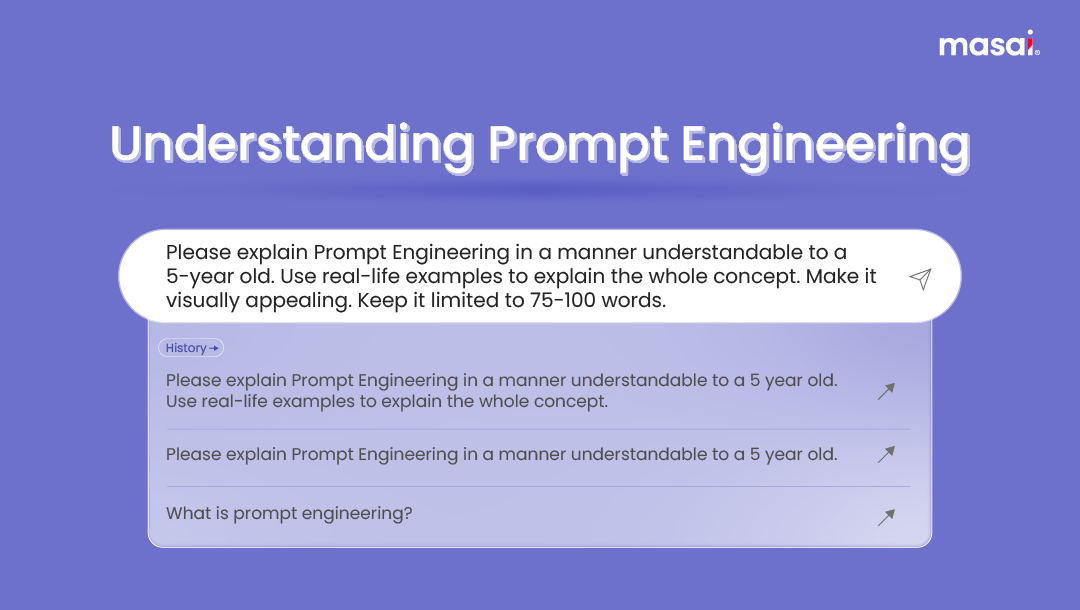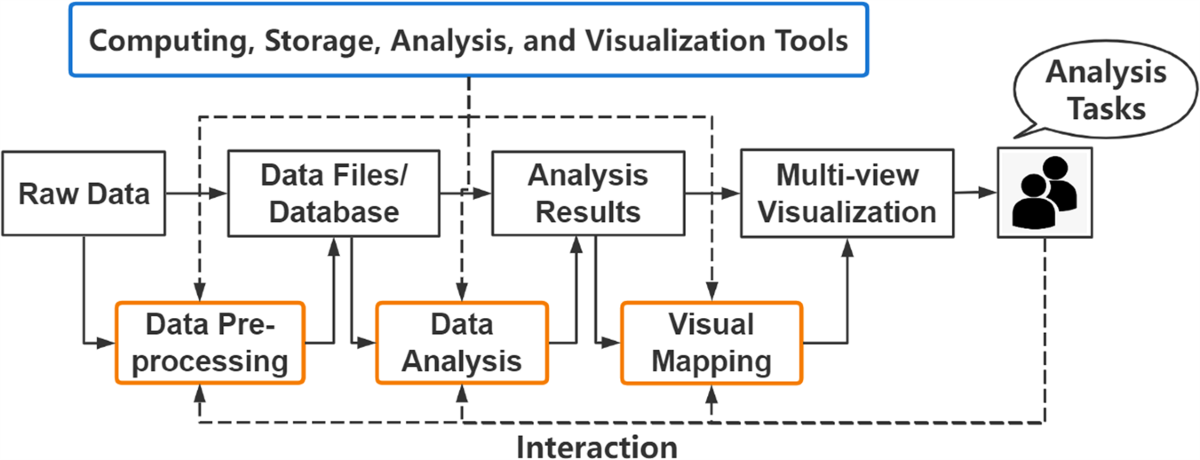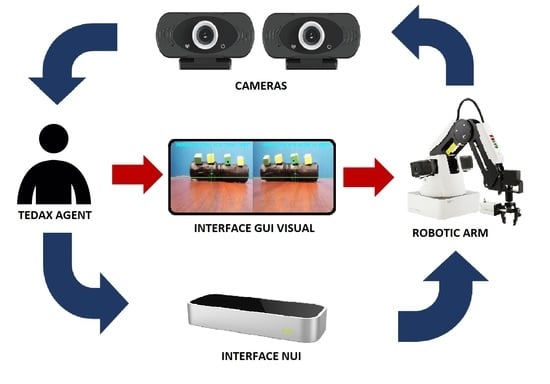Bridging Worlds: How Visual Language Diffusion Is Revolutionizing Content Creation
Understanding the Visual Language Diffusion Revolution
Visual language diffusion represents a groundbreaking approach that seamlessly integrates textual and visual elements through AI technology. By bridging these traditionally separate domains, this technology is transforming how we create, share, and consume content across industries and applications.
Understanding the Visual Language Diffusion Revolution
Visual language diffusion represents a groundbreaking approach in artificial intelligence that enables machines to process and connect visual and textual data seamlessly. This integration marks a significant shift in how we approach visual communication in the digital age.
Visual Language Diffusion Process
The foundational workflow of visual language diffusion models
flowchart LR
A[Text Input] --> B[Multimodal Encoder]
C[Visual Elements] --> B
B --> D[Diffusion Process]
D --> E[Integrated Visual-Textual Output]
At its core, diffusion models create the foundation for this new paradigm in content creation. These models work by gradually adding and then removing noise from data, allowing for high-quality generation of visual content that accurately represents textual descriptions. This capability is vital for solving complex multimodal tasks that require understanding both language and imagery.
Key Applications of Visual Language Diffusion
- Image Captioning: Automatically generating accurate and contextually relevant descriptions of images
- Visual Question Answering: Creating systems that can answer questions about visual content
- Visual Storytelling: Crafting narrative sequences that combine textual and visual elements
- Content Creation: Enabling artists and designers to translate text concepts into visual assets
The significance of high-quality multimodal processing cannot be overstated in modern communication. As our digital landscape grows increasingly visual, the ability to seamlessly integrate text and imagery becomes a crucial skill for content creators and marketers alike. Visual language diffusion provides the technological framework to make this integration not just possible, but exceptionally powerful.

The Technical Foundation of Visual Language Diffusion
The architecture behind diffusion-based visual language models represents a sophisticated fusion of computer vision and natural language processing technologies. These models learn to bridge the semantic gap between text and images through a complex multi-stage process.
Model Architecture Comparison
How visual language diffusion models compare to traditional approaches
The importance of high-quality datasets cannot be overstated in the development of effective visual language diffusion models. Datasets like MS COCO (Common Objects in Context) and Visual Genome provide diverse images paired with detailed captions, creating the foundation through which these models learn the relationship between visual elements and linguistic descriptions.
How Diffusion Models Work
Diffusion models operate on a forward-backward process principle:
- Forward Diffusion: Systematically adding noise to data until it resembles pure noise
- Learning the Reverse: Training a neural network to predict the noise added at each step
- Backward Diffusion: Starting with noise and iteratively denoising to generate content
- Conditioning: Using text embeddings to guide the denoising process toward specific visual outputs
What differentiates visual language diffusion from traditional image generation approaches is its ability to maintain semantic consistency between textual prompts and generated visuals. While conventional methods might generate visually impressive images, they often struggle with accurately reflecting specific textual instructions or maintaining narrative coherence across multiple generated elements.
The implementation of these technical foundations has been revolutionized through tools like Stable Diffusion AI image creation platforms, which have democratized access to these sophisticated technologies, making them accessible to creators of all technical backgrounds.

From Fuzzy Concepts to Clear Visual Expression
One of the most powerful aspects of visual language diffusion is its ability to transform abstract ideas into concrete visual communication design. This technology effectively eliminates the "translation gap" between what users imagine and what they can create, a challenge that has historically limited creative expression for many.
The Concept-to-Visual Process
graph TD
A[Abstract Concept] --> B[Text Description]
B --> C[Initial Visual Draft]
C --> D[Refinement Loop]
D --> E[Final Visual Expression]
D -->|Feedback| C
Before Diffusion
Traditional approaches required:
- Extensive technical skills
- Knowledge of design software
- Time-consuming iterations
- Communication barriers between concept and execution
- Significant resource investment
With Diffusion Models
Modern creators benefit from:
- Natural language interfaces
- Rapid prototyping capabilities
- Reduced technical barriers
- Closer alignment between vision and output
- Iterative feedback processes
Case studies across various industries demonstrate the evolution from text prompts to sophisticated visual narratives. For example, marketing teams have leveraged visual language diffusion to rapidly generate campaign visuals that precisely match brand guidelines and messaging objectives—a process that previously required extensive collaboration between copywriters, designers, and brand managers.
Measuring Visual Content Quality
Experts evaluate diffusion-generated content based on several key metrics:
This transformative capability follows many of the rules of visual communication while simultaneously redefining what's possible in the creative process. The technology doesn't just produce images—it creates visual expressions that convey meaning, emotion, and narrative in ways that deeply resonate with audiences.

Creating Impactful Content with Visual Language Diffusion
Implementing visual language diffusion for content creation follows a structured process that balances technical precision with creative flexibility. Understanding this process empowers creators to achieve consistent, high-quality results that effectively communicate their intended message.
Implementation Process
flowchart TB
A[Define Objectives] --> B[Create Text Prompt]
B --> C[Select Model Parameters]
C --> D[Generate Initial Output]
D --> E{Evaluate Results}
E -->|Needs Refinement| F[Adjust Prompt/Parameters]
F --> D
E -->|Satisfactory| G[Post-Processing]
G --> H[Integration into Content]
Optimizing Text Prompts for Visual Outcomes
| Prompt Element | Purpose | Example |
|---|---|---|
| Subject Description | Defines the main element | "A professional woman presenting data" |
| Style Indicators | Sets visual aesthetic | "Minimalist, corporate style, blue tones" |
| Technical Parameters | Defines quality aspects | "High resolution, studio lighting, 4K" |
| Emotional Tone | Conveys feeling | "Confident, inspiring, forward-thinking" |
| Compositional Guidance | Arranges elements | "Center framing, office background, mid-shot" |
Balancing creative control and AI assistance represents one of the key challenges in effective visual language diffusion implementation. The most successful approaches treat the technology as a collaborative tool rather than a replacement for human creativity—finding the sweet spot where human direction and machine capabilities amplify each other.
Strategic Integration in Content Development
For optimal results, visual language diffusion elements should be integrated into broader content strategies as complementary components rather than standalone assets. This integrated approach ensures that visually diffused elements harmonize with other content types, creating a coherent message across all communication channels. The result is content that not only looks impressive but effectively advances strategic objectives through the power of visual communication examples that resonate with target audiences.

Visual Language Diffusion in Action: Practical Applications
The practical applications of visual language diffusion span numerous industries and use cases, fundamentally transforming how organizations communicate complex ideas and engage with their audiences. This technology is proving particularly valuable in domains where visual impact and information clarity must work hand-in-hand.
Marketing Applications
Marketing teams are leveraging visual language diffusion to create compelling campaigns with unprecedented efficiency and creative range. This enables:
- Rapid A/B testing of visual concepts
- Personalized visual messaging at scale
- Consistent brand imagery across channels
- On-demand generation of campaign visuals
- Seamless adaptation to emerging trends
Educational Applications
In education, visual language diffusion is transforming how complex concepts are presented to students:
- Creating dynamic illustrations of abstract concepts
- Generating culturally relevant learning materials
- Producing step-by-step visual guides
- Developing interactive learning scenarios
- Translating text descriptions to accessible visuals
Impact Across Industries
Improving accessibility represents another significant application area for visual language diffusion technology. Organizations are using these tools to automatically generate visual representations of information that might otherwise be inaccessible to certain audiences. This includes creating explanatory diagrams from technical text, transforming statistical data into intuitive visualizations, and developing descriptive imagery for those with reading difficulties.
E-commerce Transformations
The e-commerce sector has seen particularly dramatic benefits from better product visualization techniques powered by visual language diffusion:
graph TB
A[Product Description] --> B[Context-Aware Visualization]
B --> C[Personalized Product Views]
C --> D[Enhanced Customer Experience]
D --> E[Increased Conversion Rates]
F[Photography Budget] --> G[AI-Generated Product Images]
G --> H[Consistent Style Across Catalog]
H --> I[Simplified Inventory Updates]
I --> J[Reduced Product Return Rates]
This approach allows online retailers to present products in highly contextual ways without the expense of extensive photo shoots, resulting in both cost savings and performance improvements.
Across all these applications, the common thread is how visual language diffusion bridges the gap between abstract information and concrete visual representation—making complex ideas more accessible, engaging, and impactful for diverse audiences.

Overcoming Common Challenges in Visual Language Diffusion
While visual language diffusion offers transformative capabilities, implementing these systems effectively requires addressing several key challenges. Organizations that proactively manage these issues achieve significantly better outcomes from their visual language initiatives.
Addressing Dataset Biases
Biases in training datasets can significantly impact output generation, leading to problematic representations or uneven performance across different contexts. Effective mitigation strategies include:
- Diverse Dataset Curation: Intentionally incorporating content from varied sources, perspectives, and cultural contexts
- Bias Detection Methods: Implementing automated analyses to identify potential bias patterns in both datasets and model outputs
- Iterative Refinement: Continuously improving models through cycles of testing, feedback, and adjustment
- Domain-Specific Fine-Tuning: Adapting models to specific use cases with carefully calibrated supplementary training
Common Implementation Challenges
Improving output consistency and quality often requires implementing a systematic approach to prompt engineering and result validation. Organizations that achieve the best results typically develop internal standards and review processes for their visual language diffusion workflows.
Managing Computational Requirements
Visual language diffusion can be computationally intensive, creating implementation challenges for organizations with limited infrastructure:
| Scale | Solution Approach |
|---|---|
| Small | Cloud-based API services |
| Medium | Optimized edge deployment |
| Large | Custom infrastructure |
Ethical Considerations
Implementing visual language diffusion responsibly requires addressing several ethical dimensions:
- Transparency about AI-generated content
- Copyright and intellectual property concerns
- Preventing misuse for misinformation
- Avoiding harmful stereotypes or representations
- Ensuring accessibility for diverse audiences
- Conscientious data collection and usage
Organizations that effectively navigate these challenges establish governance frameworks that balance innovation with responsibility. This includes developing clear policies, training staff appropriately, implementing robust review processes, and staying informed about evolving best practices in the field.

The Future Landscape of Visual Language Diffusion
The field of visual language diffusion continues to evolve rapidly, with emerging research directions pointing toward increasingly sophisticated capabilities and applications. Understanding these trends provides valuable insight into where the technology is heading and how organizations can prepare to leverage future developments.
Evolution of Visual Language Models
timeline
title Visual Language Diffusion Evolution
2020 : Initial Diffusion Models
: Limited Text-to-Image Generation
2021 : Multimodal Conditioning
: Improved Resolution
2022 : Advanced Semantic Control
: Style Consistency
2023 : Interactive Refinement
: Video Generation Capabilities
2024 : Real-Time Performance
: Domain-Specific Optimization
2025 : Human-Level Creative Collaboration
: Seamless Multimodal Integration
Research in multimodal representation learning is advancing how models understand and connect different data types. Current directions focus on developing more nuanced representations that capture subtle semantic relationships between text and visual elements—enabling systems that can understand context, intent, and cultural significance at deeper levels than current implementations.
How Scaling Affects Quality and Capabilities
As this data illustrates, scaling model size and training data consistently improves performance, though with diminishing returns at the highest levels. The most significant gains appear between the 1B and 100B parameter range, suggesting this as the optimal development zone for most applications.
Next-generation visual language interfaces are expected to be increasingly conversational and intuitive. Rather than requiring technically precise prompts, these interfaces will engage in natural dialogue about visual concepts, offer suggestions, and collaborate iteratively with users to refine their vision. This evolution will significantly lower barriers to entry, making sophisticated visual creation accessible to non-technical users.
Perhaps most excitingly, we're seeing the emergence of human-AI creative collaboration models that fundamentally redefine the relationship between creators and their tools. These systems function less as utilities and more as creative partners—offering novel suggestions, identifying opportunities for improvement, and adapting to the unique style and preferences of individual users.
The success of these future developments depends on continued research addressing current challenges—particularly around ethical implementation, computational efficiency, and developing models that can generalize effectively across domains while maintaining consistency and quality.

Transforming Your Workflow with PageOn.ai's Visual Language Tools
PageOn.ai offers a comprehensive suite of visual language tools that significantly streamline the content creation process. By integrating cutting-edge diffusion technology with intuitive interfaces, PageOn.ai makes sophisticated visual expression accessible to creators regardless of their technical background.
PageOn.ai Workflow Integration
flowchart LR
A[Content Concept] --> B[PageOn.ai Conversation Interface]
B --> C[AI Blocks System]
C --> D[Deep Search Asset Integration]
D --> E[Visual Integration]
E --> F[Multi-format Export]
G[Traditional Workflow] --> H[Time-intensive Research]
H --> I[Manual Asset Creation]
I --> J[Design Software]
J --> K[Revisions]
K --> L[Final Output]
style A fill:#FFF,stroke:#FF8000
style B fill:#FFF,stroke:#FF8000
style C fill:#FFF,stroke:#FF8000
style D fill:#FFF,stroke:#FF8000
style E fill:#FFF,stroke:#FF8000
style F fill:#FFF,stroke:#FF8000
style G fill:#FFF,stroke:#A0A0A0
style H fill:#FFF,stroke:#A0A0A0
style I fill:#FFF,stroke:#A0A0A0
style J fill:#FFF,stroke:#A0A0A0
style K fill:#FFF,stroke:#A0A0A0
style L fill:#FFF,stroke:#A0A0A0
AI Blocks System
PageOn.ai's innovative AI Blocks system revolutionizes how creators organize and visualize information:
- Modular components for building complex visualizations
- Drag-and-drop interface requiring no coding
- Smart templates that adapt to your content
- Real-time preview and adjustment capabilities
- Style consistency across all generated elements
Deep Search Capabilities
Finding and integrating the perfect visual assets becomes effortless with PageOn.ai's Deep Search:
- Semantic understanding of visual content
- Context-aware asset recommendations
- Style-matching across diverse visual libraries
- Automatic licensing and attribution handling
- One-click integration into projects
The conversation-based creation process represents one of PageOn.ai's most significant innovations. Rather than requiring users to master technical prompts or complex interfaces, PageOn.ai enables natural dialogue about creative goals and objectives. This approach makes visual language accessible to everyone—from seasoned designers to first-time creators—by translating creative intent into professional-quality visual expressions.
Efficiency Gains with PageOn.ai
Real-World Success Stories
Organizations implementing PageOn.ai for multimodal content creation have reported significant benefits:
- Marketing Agency: Reduced campaign visual development time by 78% while increasing client satisfaction scores
- Education Publisher: Created 500+ custom educational illustrations in two weeks, a process that previously took months
- E-commerce Platform: Increased product visualization options by 300% without additional photography budget
- Corporate Communications: Empowered non-design team members to create on-brand visual content independently
By integrating PageOn.ai's visual language tools into existing workflows, organizations can dramatically reduce production time while simultaneously improving output quality and creative range. The system's flexibility makes it valuable across departments—from marketing and product development to education and internal communications—creating a unified visual language that strengthens brand identity while accommodating diverse communication needs.

Transform Your Visual Expressions with PageOn.ai
Discover how PageOn.ai's visual language diffusion tools can help you create stunning, impactful content that communicates complex ideas with clarity and style—no technical expertise required.
Embracing the Visual Language Revolution
Visual language diffusion represents a fundamental shift in how we approach content creation and communication. By bridging the gap between textual concepts and visual expression, this technology empowers creators to communicate more effectively, engage audiences more deeply, and transform abstract ideas into compelling visual narratives.
As we've explored throughout this guide, the applications of visual language diffusion span numerous industries and use cases—from marketing and education to e-commerce and corporate communications. Organizations that effectively implement these technologies gain significant competitive advantages in terms of production efficiency, creative range, and audience engagement.
PageOn.ai stands at the forefront of this revolution, offering intuitive tools that make sophisticated visual language capabilities accessible to creators of all technical backgrounds. Through its AI Blocks system, Deep Search capabilities, and conversation-based creation process, PageOn.ai transforms what would otherwise be complex technical challenges into straightforward creative workflows.
As visual language diffusion continues to evolve, the organizations that embrace these tools and integrate them thoughtfully into their communication strategies will be best positioned to connect with audiences in increasingly meaningful and impactful ways. The future of content creation is visual, multimodal, and collaborative—and it's available today through platforms like PageOn.ai.
You Might Also Like
How to Design Science Lesson Plans That Captivate Students
Create science lesson plans that captivate students with hands-on activities, clear objectives, and real-world applications to foster curiosity and critical thinking.
How to Write a Scientific Review Article Step by Step
Learn how to write a review article in science step by step. Define research questions, synthesize findings, and structure your article for clarity and impact.
How to Write a Self-Performance Review with Practical Examples
Learn how to write a self-performance review with examples and tips. Use an employee performance review work self evaluation sample essay to guide your process.
How to Write a Spec Sheet Like a Pro? [+Templates]
Learn how to create a professional spec sheet with key components, step-by-step guidance, and free templates to ensure clarity and accuracy.
